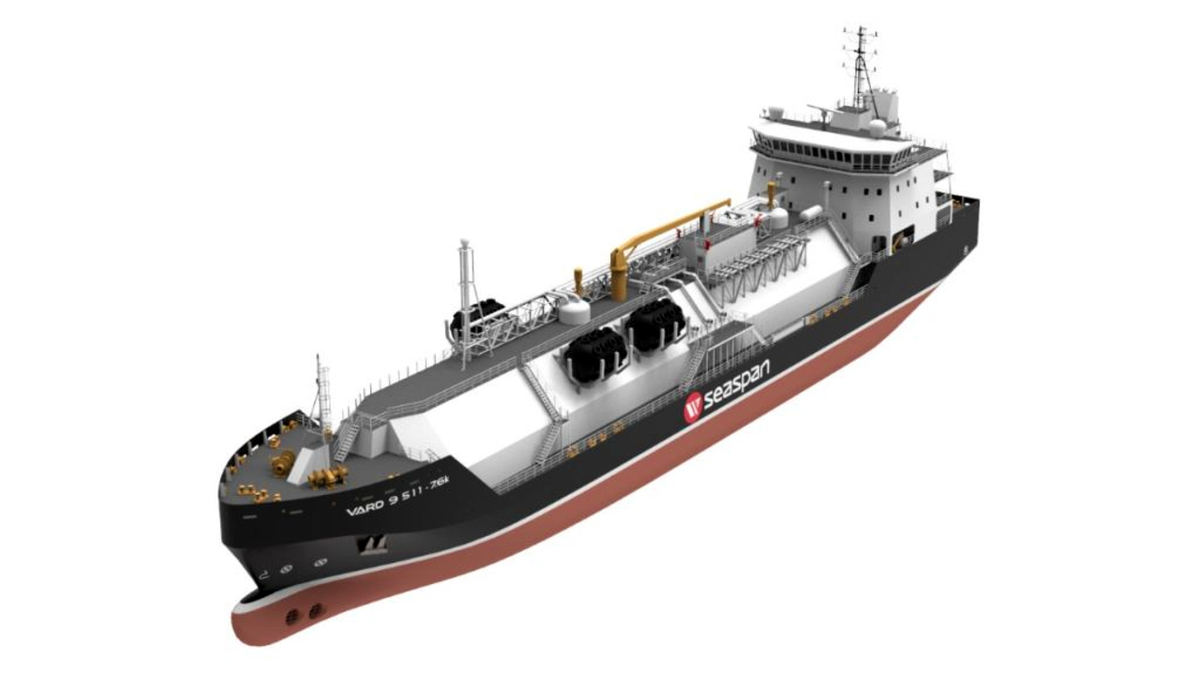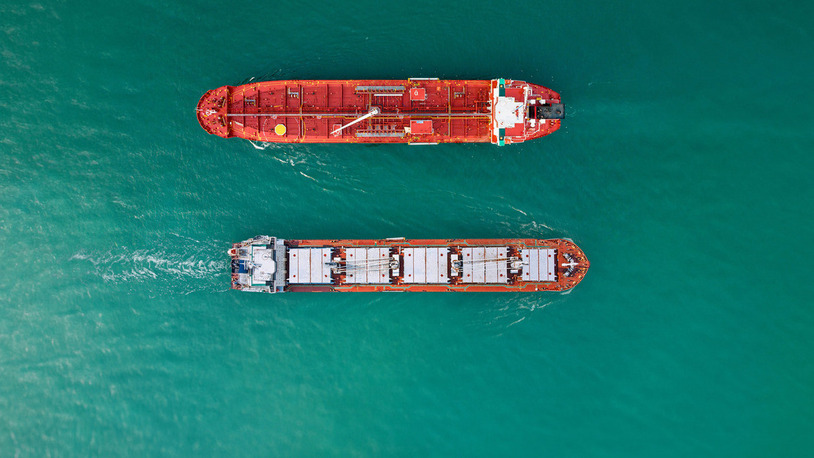Business Sectors
Contents
Register to read more articles.
SeaspanLNG inks deal for first North American west coast LNGBV
Global refuelling infrastructure for LNG-fuelled vessels continues to advance. In the latest news, Canada’s SeaspanLNG has signed a letter of intent (LOI) with Nantong CIMC Sinopacific Offshore & Engineering Co Ltd (SOE) for the construction of the first LNG bunker vessel for the west coast of North America
To be built in China, the 7,600-m3 LNG bunker vessel is being designed by VARD Marine Inc, incorporating emerging technologies, and further operational emissions and greenhouse gas (GHG) emissions reductions while considering underwater radiated noise. Based on a Vard 9 511 design, the LNG bunker vessel (LNGBV) will have a length of 112.8 m, beam of 18.6 m and depth of 5 m, with two azimuthing thrusters and two bow thrusters for exceptional manoeuvring and stationkeeping capabilities.
In developing the ‘future-proof’ LNGBV design, Seaspan said there was an emphasis placed on the ability to incorporate emerging technologies, increase electric storage system capacity, and GHG reductions while maintaining operability and flexibility.
The LNGBV will have the capability to refuel multiple ship types, conduct ship-to-shore transfer from a wide range of terminals and engage in ship-to-ship LNG transfer for coastal and shortsea shipping operations.
Bureau Veritas recently awarded an approval in principle to SeaspanLNG for the design.
SeaspanLNG director, fleet engineering and vessel development Harly Penner said, “This LOI represents an excellent opportunity for SeaspanLNG to work with SOE and to build the VARD-designed 7,600-m3 LNG bunker vessel.” Mr Penner said the design would be developed over the next months.
SeaspanLNG is part of Seaspan Marine Transportation, a group of Canadian companies that are primarily involved in ship assist, coastal and deepsea transportation, ferry services and fuel bunkering on the west coast of North America.
Seaspan Marine Transportation president Ian McIver said SOE “is a well-known and proven shipyard for delivering high-quality sophisticated LNG bunker vessels.” He added, “SeaspanLNG will continue to build the LNG bunkering opportunities in our regions and we look forward to being able to provide a refuelling service for LNG-fuelled vessels on the west coast.”
The LNG bunker vessel would support LNG-fuelled vessels calling at regional ports, including Canada’s largest port, the Port of Vancouver.
“As we work towards our vision of making the Port of Vancouver the world’s most sustainable port, we are encouraged by Seaspan’s decision to build a new LNG bunkering vessel and applaud their leadership in supporting the transition to cleaner, lower-emissions marine fuels at the port,” said Vancouver Fraser Port Authority vice president of environment, community and government affairs Duncan Wilson.
Seaspan Ferries operates LNG-fuelled ferries, which have been bunkered with LNG supplied by FortisBC with tanker trucks.
“FortisBC has been providing Seaspan with LNG for a number of years and welcomes this news as an important step in establishing British Columbia as a liquefied natural gas bunkering hub for regional and international vessels,” said FortisBC vice president, major projects and LNG Mike Leclair. “Promoting the use of LNG as a marine fuel is not only an economic opportunity for the province, it is one of our most significant opportunities to take meaningful climate action. LNG produced at our Tilbury facility is among the lowest carbon intensity in the world and can reduce greenhouse gas emissions by up to 27% compared to common marine fuels,” he added.
The global fleet of LNG bunkering vessels continues to grow. There are 31 LNG bunker vessels in operation and another 21 on order, according to DNV’s Alternative Fuel Insights.
Riviera Maritime Media will provide free technical and operational webinars in 2021. Sign up to attend on our events page
Related to this Story
IMO’s net-zero plan poised to pressure ageing fleet with rising costs
Events
TUGTECHNOLOGY '25
Reefer container market outlook: Trade disruption, demand shifts & the role of technology
Asia Maritime & Offshore Webinar Week 2025
Marine Lubricants Webinar Week 2025
© 2024 Riviera Maritime Media Ltd.














